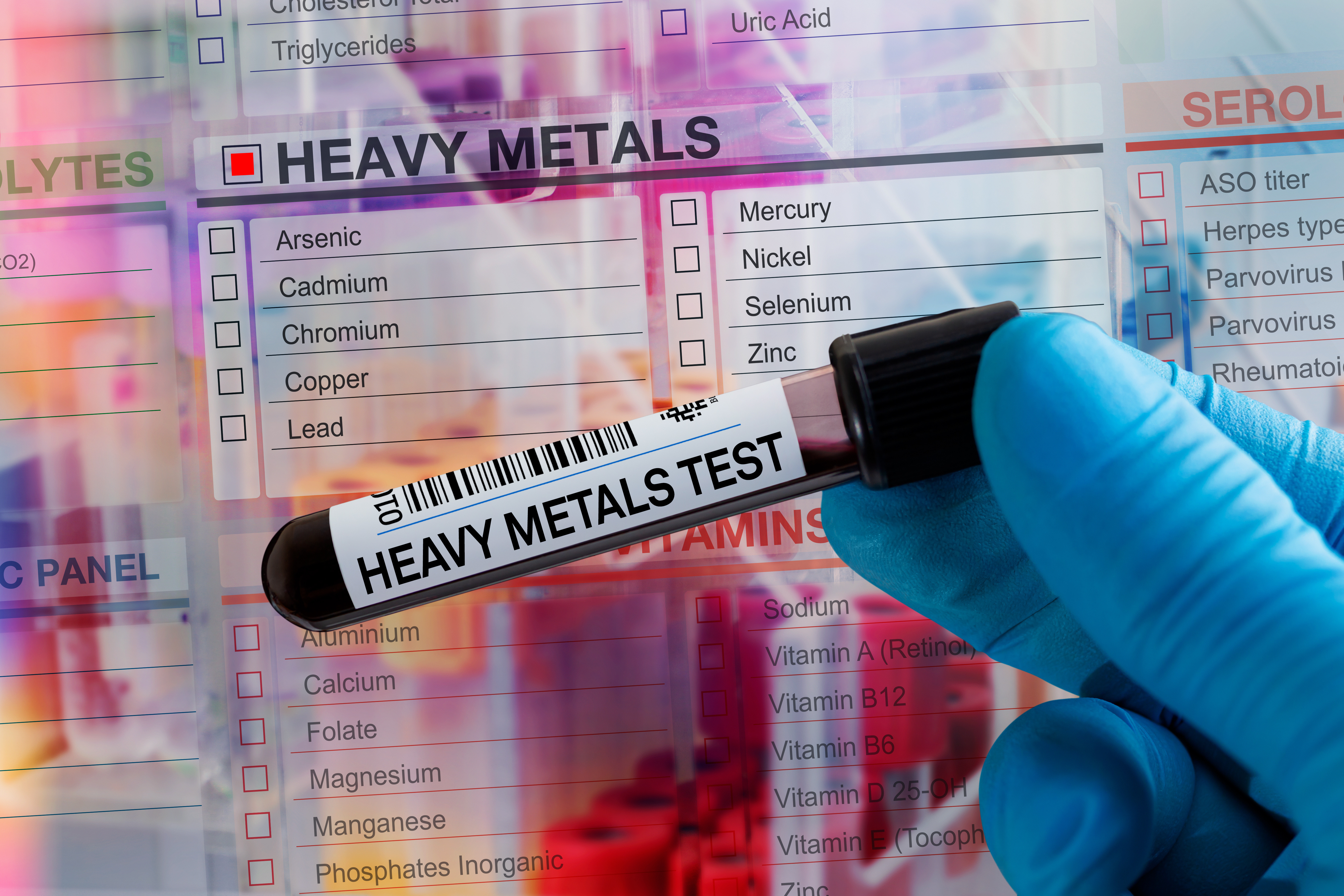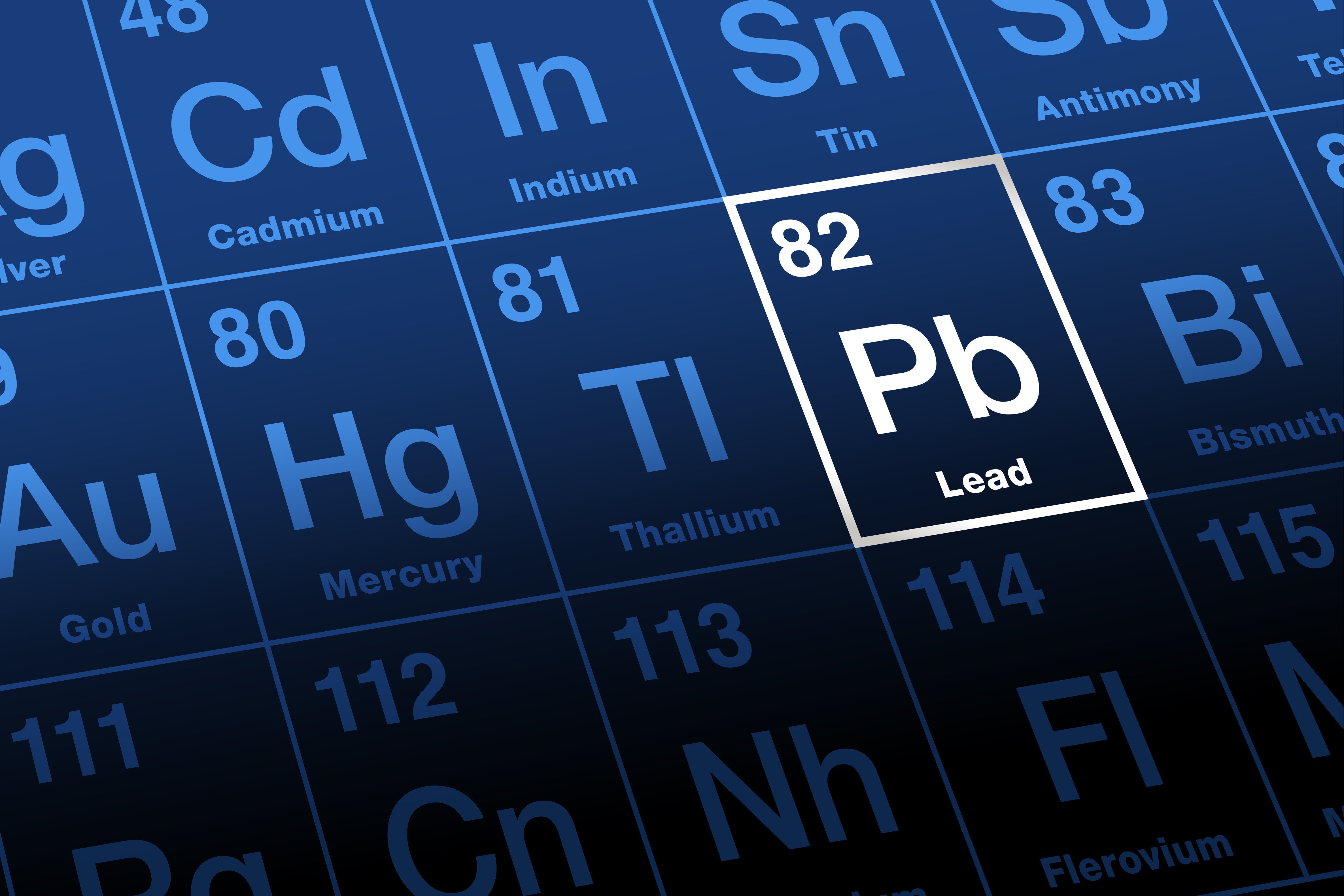The Health Hazards of Toxic Heavy Metals in Everyday Items
Pause for a moment. Think about the objects you and your patients interact with daily: the go-to lipstick, the trendy cookware, and the children’s toys. Now imagine this—each time they touch these familiar items, they might be coming into contact with toxic heavy metals. These hidden toxins are everywhere and gradually build up in our bodies without us even realizing it.
In today’s fast-paced world, many remain unaware of what’s happening inside our bodies. It’s difficult to trace the root causes of nonspecific symptoms like fatigue, brain fog, or mood swings. This article will explore how everyday objects might be contributing to these symptoms that most of us suffer from and overlook. Heavy metal toxicity, though under-recognized, is a critical health issue that may be affecting a significant portion of the population. Fortunately, testing for toxic heavy metals has become easier and more accessible, and detoxification offers measurable health benefits.
What Are Heavy Metals (and Are All of Them Toxic)?
Heavy metals are naturally found in the Earth's crust but some can be toxic when accumulated in the human body. However, not all metals are inherently harmful—some environmental heavy metals, like zinc, copper, and iron, are essential for various biological processes when present in the body at appropriate levels.
Toxic heavy metals, on the other hand, refer specifically to metals that can cause harm to health even at low concentrations. It’s important to note that toxicity isn’t solely determined by whether a metal is classified as “heavy” based on its density. For example, aluminum is not technically a heavy metal, but it is considered toxic due to its potential to disrupt neurological and cellular functions when accumulated in the body.
Some of the most concerning toxic heavy metals include Lead, Mercury, Cadmium, and Arsenic. These metals enter the body through various routes—ingestion, inhalation, and dermal absorption—and tend to bioaccumulate, meaning that even small exposures can lead to significant toxicity levels over time.
Symptoms such as headaches, digestive issues, and reduced attention span are often attributed to stress, aging, or other chronic conditions. However, heavy metal toxicity may be an underlying cause that often goes unrecognized without appropriate testing. Integrating heavy metal screening into routine check-ups can lead to more accurate diagnoses and significantly improved patient outcomes.
How Toxic Heavy Metals Affect the Body
Lead
Lead exposure is particularly harmful to the nervous system, especially in children, causing cognitive impairments and behavioral issues. In adults, chronic lead exposure can lead to hypertension, kidney damage, and reproductive problems. Lead-based paint is often found in old homes.
Mercury
Mercury is a neurotoxin that affects memory, concentration, and mood. Long-term exposure to contaminated fish can lead to immune system dysfunction and mental health problems. Pregnant women should be especially cautious because mercury exposure can cause harm to the fetus.
Arsenic
Chronic arsenic exposure, typically from contaminated food or water, has been linked to cardiovascular disease, diabetes, and cancers of the bladder, lungs, and skin. It also weakens the immune system, making individuals more vulnerable to other diseases.
Cadmium
Cadmium primarily damages the kidneys and bones, leading to kidney dysfunction and an increased risk of fractures. Prolonged exposure to cadmium can cause lung and prostate cancer. Cadmium can be found in foods such as leafy greens and mushrooms and, like all heavy metals, in the air, water, and soil.
Items That Quietly Expose Us to Toxic Metals
In the last couple of years, there has been an increase in both awareness and concern about heavy metal exposure in everyday life. Despite regulatory efforts, toxic heavy metals still lurk in places we wouldn’t immediately suspect. It’s important to be aware of these common sources and reduce our exposure to them. Toxic metals are not confined to industrial plants or hazardous waste sites; as we might have thought in the past, they’re actually closer to home than we’d expect.
Makeup Bag
Despite tighter regulations, personal care items like makeup, toothpaste, and skin creams contain toxic heavy metals. Unfortunately, lead and mercury are still sometimes used in pigments and preservatives.
Children’s Toys
Toxic heavy metals aren’t solely in products designed for adults. Some children's toys and costume jewelry contain several toxic metals. Kids are particularly vulnerable to these toxins since they absorb heavy metals more easily than adults—and to make it even worse, these toys often end up in their mouths.
The Kitchen
Trendy non-stick cookware? That, too, can leach harmful metals into our food. It is best to avoid Teflon and other nonstick pans, especially those made with either PTFE or PFOA.
Our Food
Mercury levels in fish, especially in larger species like tuna and swordfish, may contain a lot of Mercury. And unfortunately, your leafy greens and vegetables may also contain another type of heavy metal: Arsenic.
Tap Water
Increasing water consumption is a health goal for many, but water straight from the tap could contain lead if the building has older plumbing.
Your Garden
Urban soil, especially near industrial sites, can be contaminated with toxic heavy metals like lead and cadmium. Vegetables grown in polluted soil can absorb these metals, making homegrown produce a potential source of exposure. Testing your soil for contaminants is key.
The Air
Air pollution continues to be a major source of toxic heavy metal exposure in cities. Industrial emissions release dangerous particles like lead and cadmium into the atmosphere, which are inhaled by residents or settle into water supplies and soil.
The Scary Part About Toxic Metals
The scariest thing about toxic metals is that they don’t show their effects overnight. The insidious nature of toxic metal exposure lies in its slow, cumulative effect on the body. Unlike acute poisoning, which presents with immediate and obvious symptoms, chronic exposure to toxic metals often goes unnoticed until it causes significant damage.
Toxic metals, like lead and mercury, are notorious for damaging the nervous system. In children, this can lead to developmental issues, learning disabilities, and behavioral problems. For adults, long-term exposure has been linked to memory loss, cognitive decline, and even mood disorders.
These metals weaken immune defenses, making it harder for the human body to fend off infections. Over time, this leaves patients more susceptible to chronic illnesses, autoimmune diseases, and possibly cancer.
While we often blame poor diet or lack of exercise for heart disease – heavy metals like cadmium and lead can also play a deadly role. These toxins damage blood vessels, raising the risk of high blood pressure, heart attacks, and strokes.
Toxic heavy metals like mercury and cadmium can negatively impact hormones, leading to fertility issues and thyroid problems. Hormonal imbalances caused by toxic metals can cause significant damage, affecting everything from energy levels to mood swings.
This list is not exhaustive; toxic metals can embed themselves in any cell of the body and migrate from one bodily system to the next — so it’s good to keep tabs on the most common symptoms of heavy metal poisoning.
[RELATED WEBINAR] Metal Toxicity (Part I) - Introduction to Toxic Metals: Access Live
Nowadays, It’s a Must that Doctors Test for Both Toxic and Nutritional Metals
With industrialization and the increasing use of chemicals, exposure to toxic heavy metals is more common than ever. At the same time, nutritional metal imbalances can be just as detrimental to metabolic and immune function. It is important to understand that both toxic metal exposures and nutritional metal deficiencies, or excesses, play a significant role in their patients' well-being.
Preventive medicine goes beyond treating symptoms—it's about identifying and addressing the root cause of health issues before they become unmanageable. Testing for toxic and nutritional metals ensures early detection and intervention, helping to prevent long-term damage or illness. Monitoring both toxic and nutritional metals gives a complete picture of a patient’s health. It can be key to developing a comprehensive treatment plan, offering both protection and peace of mind.
Access Medical Labs’ Heavy Metals Testing
Our comprehensive metals testing measures both toxic and nutritional metals in your patients’ urine. To ensure accurate results, it’s important that patients avoid seafood or shellfish for 48 hours before the test, as these can temporarily elevate certain toxic metal levels. Dr. Ghen also recommends using zeolite, a natural detoxifying agent, before testing to help clear metals from the body and establish a more accurate baseline. Once the sample reaches our laboratory, our skilled lab technologists will analyze it, and you'll receive the results within 48 hours, ready to discuss with your patient.
[VIDEO] True Health News: Use Zeolite for Toxic Metal Removal, Part 1
About Access:
Access is the nation’s premier specialty diagnostic lab. We offer a broad menu of testing from blood, saliva, urine & swab samples. We perform all of your tests in our 25,000 sq. ft. ultra-automated facility in Jupiter, Florida & provide results within 24hrs. Since 2003, we continuously strive to innovate, inspire, and improve solutions for physicians by providing an exceptional personalized experience with the most accurate testing.
Feel free to contact our specialist to find out more about prices and services. We are always ready to answer your questions: sales@accessmedlab.com
You May Also Like
These Related Blog Posts

6 Places Toxic Heavy Metals Live in the Body

Toxic Heavy Metals are Wrecking Your Patients' Health





